Create a multi-cloud universe
This page describes how to create a YugabyteDB universe spanning multiple geographic regions and cloud providers. In this example, you'll deploy a single Yugabyte universe across AWS (US-West-2), Google Cloud (Central-1), and Microsoft Azure (US-East1).
The universe topology will be as follows:
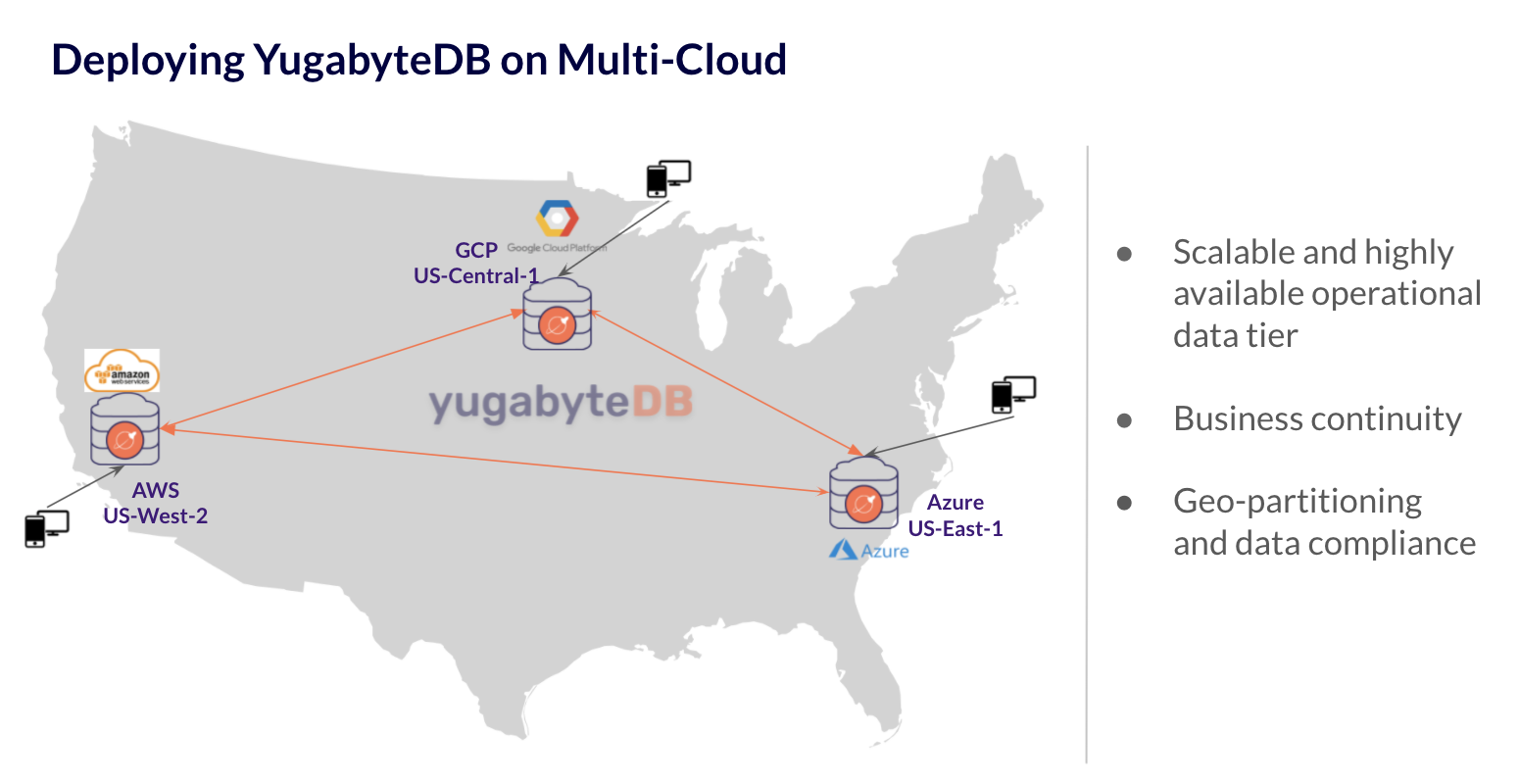
To do this, you'll need to:
- Check the prerequisites
- Set up node instance VMs in each cloud (AWS, GCP, and Azure)
- Set up VPC peering through a VPN tunnel across these 3 clouds
- Install Yugabyte Platform on one of the nodes
- Deploy a Yugabyte universe on your multi-cloud topology
- Run the TPC-C benchmark
Prerequisites
- Ability to create VPC, subnets and provision VMs in each of the clouds of choice
- Root access on the instances to be able to create the Yugabyte user
- The instances should have access to the internet to download software (not required, but helpful)
Set up instance VMs
When you create a universe, you'll need to import nodes that can be managed by Yugabyte Platform. To set up your nodes, follow the instructions on the Prepare nodes (on-prem) page.
Notes on node instances:
- Your nodes across different cloud providers should be of similar configuration — vCPUs, DRAM, storage, and networking.
- For more information on ports used by YugabyteDB, refer to Default ports.
- Ensure that your YugabyteDB nodes conform to the requirements outlined in the deployment checklist. This checklist also gives an idea of recommended instance types across public clouds.
Set up VPC peering
Next, set up multi-cloud VPC peering through a VPN tunnel.
Yugabyte is a distributed SQL database, and requires TCP/IP communication across nodes and requires a particular set of firewall ports to be opened for cluster operations, which you set up in the previous section.
You should use non-overlapping CIDR blocks for each subnet across different clouds.
All public cloud providers enable VPN tunneling across VPCs and their subnet to enable network discovery. As an example, refer to this tutorial on connecting an AWS VPC to Google's Cloud Platform over a VPN.
Install Yugabyte Platform
Follow these steps on the Install Yugabyte Platform page to deploy Yugabyte Platform on a new VM on one of your cloud providers. You'll use this node to manage your YugabyteDB universe.
Configure the on-premises cloud provider
This section outlines now to configure the on-premises cloud provider for YugabyteDB using the Yugabyte Platform console. If no cloud providers are configured, the main Dashboard page highlights that you need to configure at least one cloud provider. Refer to Configure the on-premises cloud provider for more information.
Follow the instructions in the next sub-sections to configure your cloud provider, instance types, and regions, and to provision the instances you'll use in your universe.
Set up the cloud provider
On the Provider Info tab, configure the cloud provider as follows:
-
Provider Name is
multi-cloud-demo. -
SSH User is the user which will run Yugabyte on the node (yugabyte in this case).
-
SSH Port should remain the default of
22unless your servers have a different SSH port. -
Manually Provision Nodes should be set to off so that Platform will install the software on these nodes.
-
SSH Key is the contents of the private key file to be used for authentication.
Note that Paramiko is used for SSH validation, which typically doesn't accept keys generated with OpenSSL. If you generate your keys with OpenSSL, use a format similar to:ssh-keygen -m PEM -t rsa -b 2048 -f test_id_rsa -
Air Gap install should only be on if your nodes don't have internet connectivity.
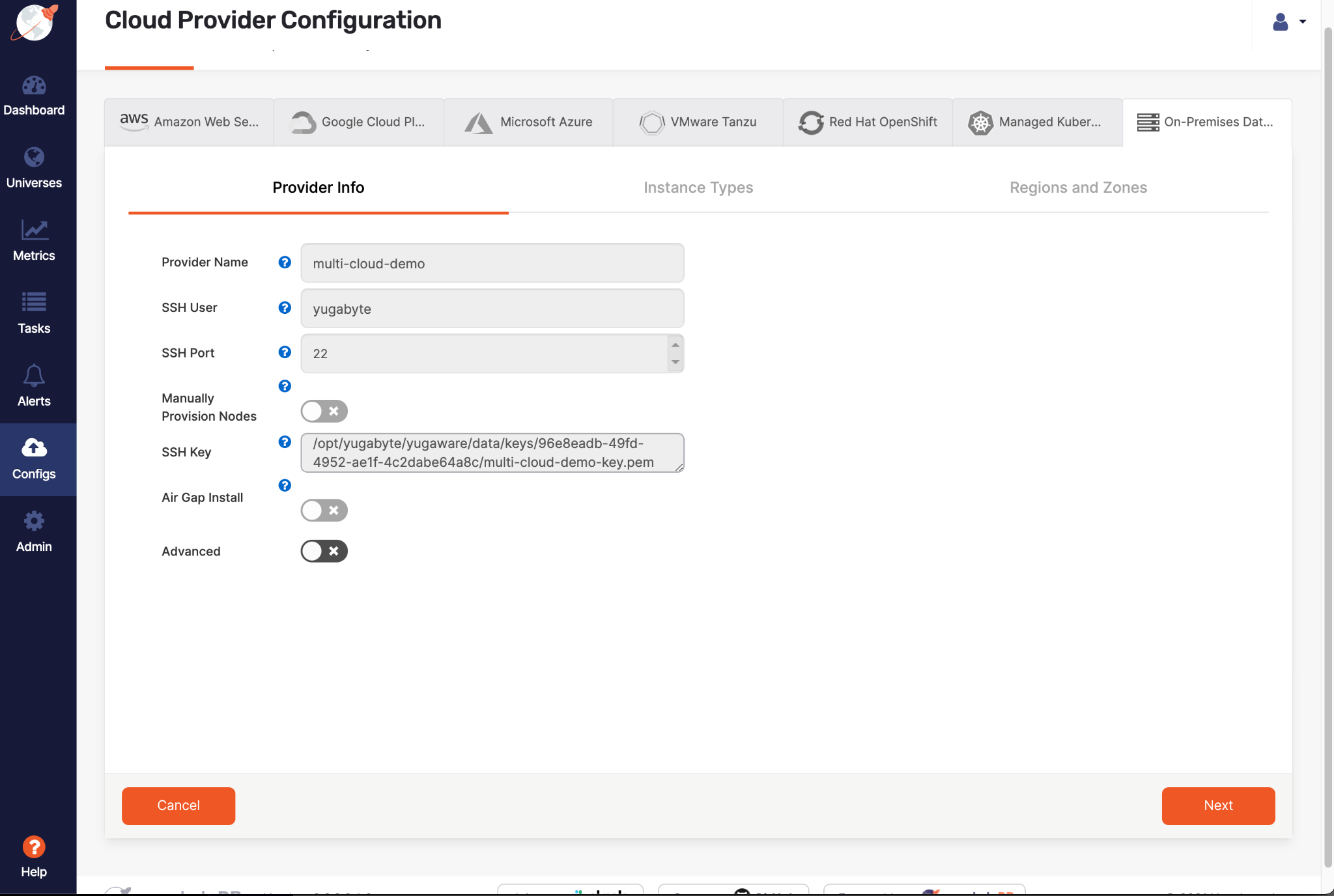
Define an instance type
On the Instance Types tab, enter a machine description which matches the nodes you will be using. The machine type can be any logical name, given the machine types will be different between all 3 regions. In this example, use 8core.

Define regions
On the Regions and Zones tab, define your regions.
It can be tricky to identify which nodes are in which clouds, so you should use descriptive names.
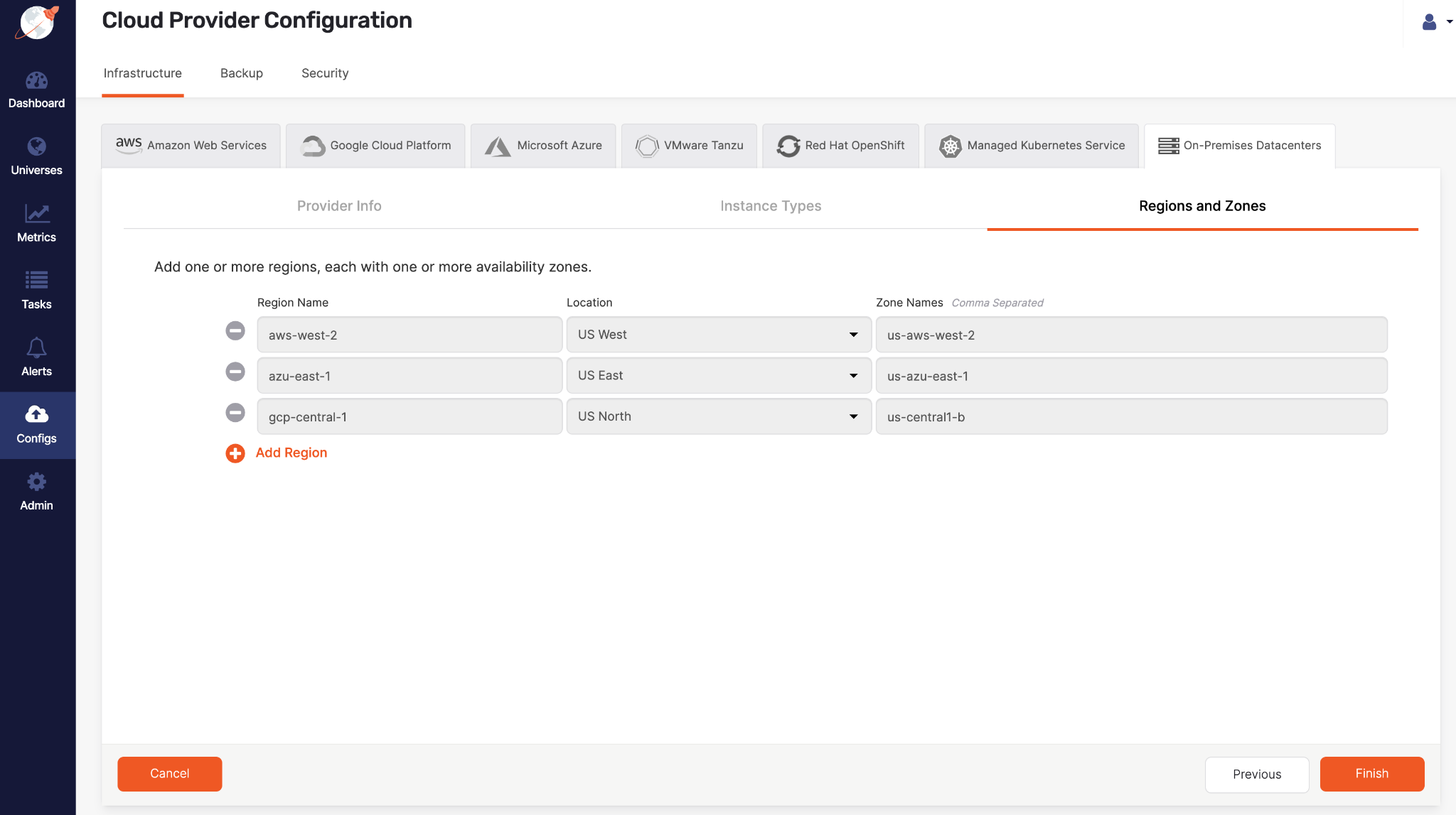
Save the provider
Click Finish to create your cloud provider. Once fully configured, the provider should look similar to the following:
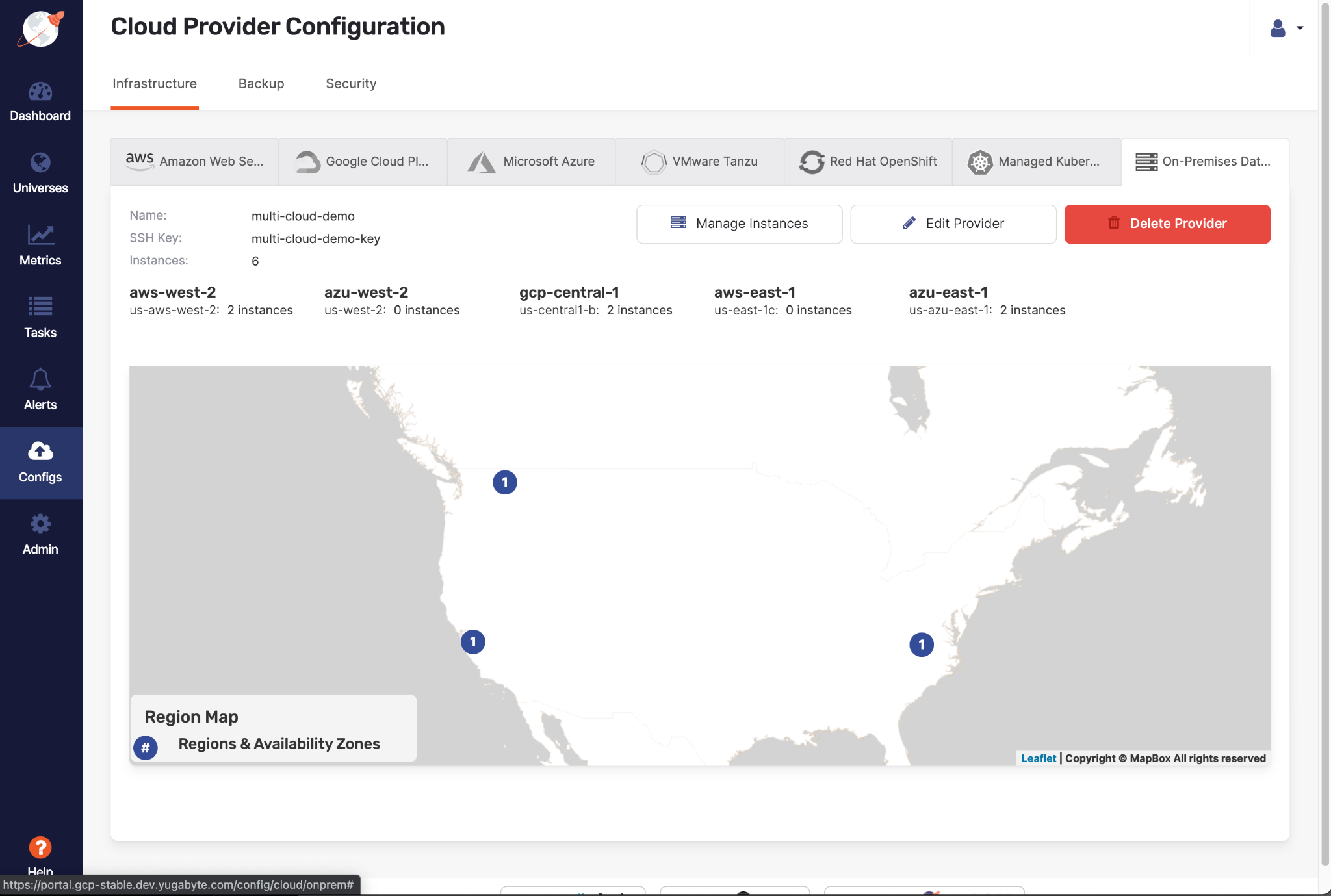
Provision instances
Once you've defined your cloud provider configuration, click Manage Instances to provision as many nodes as your application requires. Follow the instructions in Step 2 of the Configure the on-premises cloud provider page.
The provider's instance list should be similar to this:
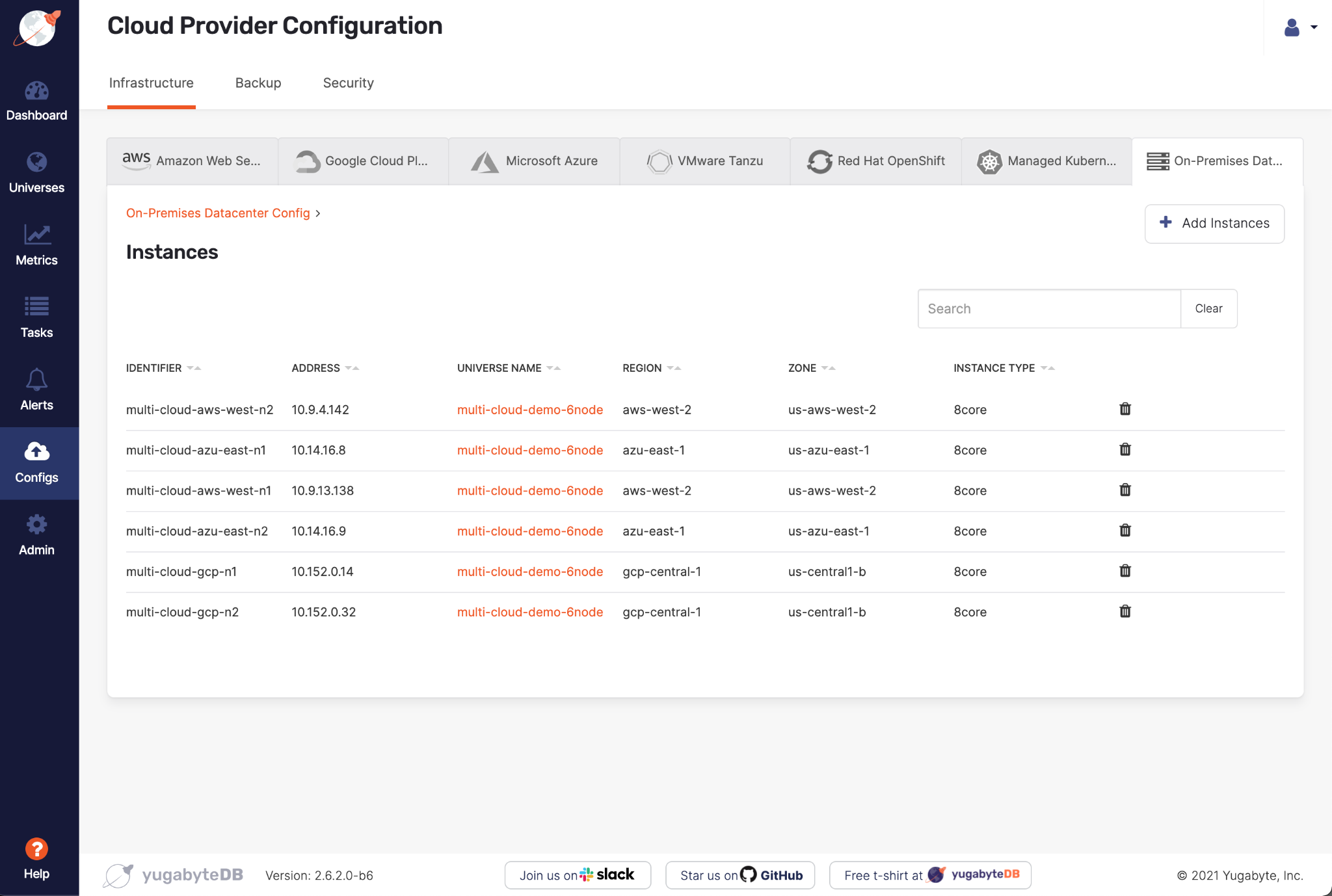
Deploy a universe
To create a multi-region universe, do the following:
-
On the Dashboard or Universes page, click Create Universe.
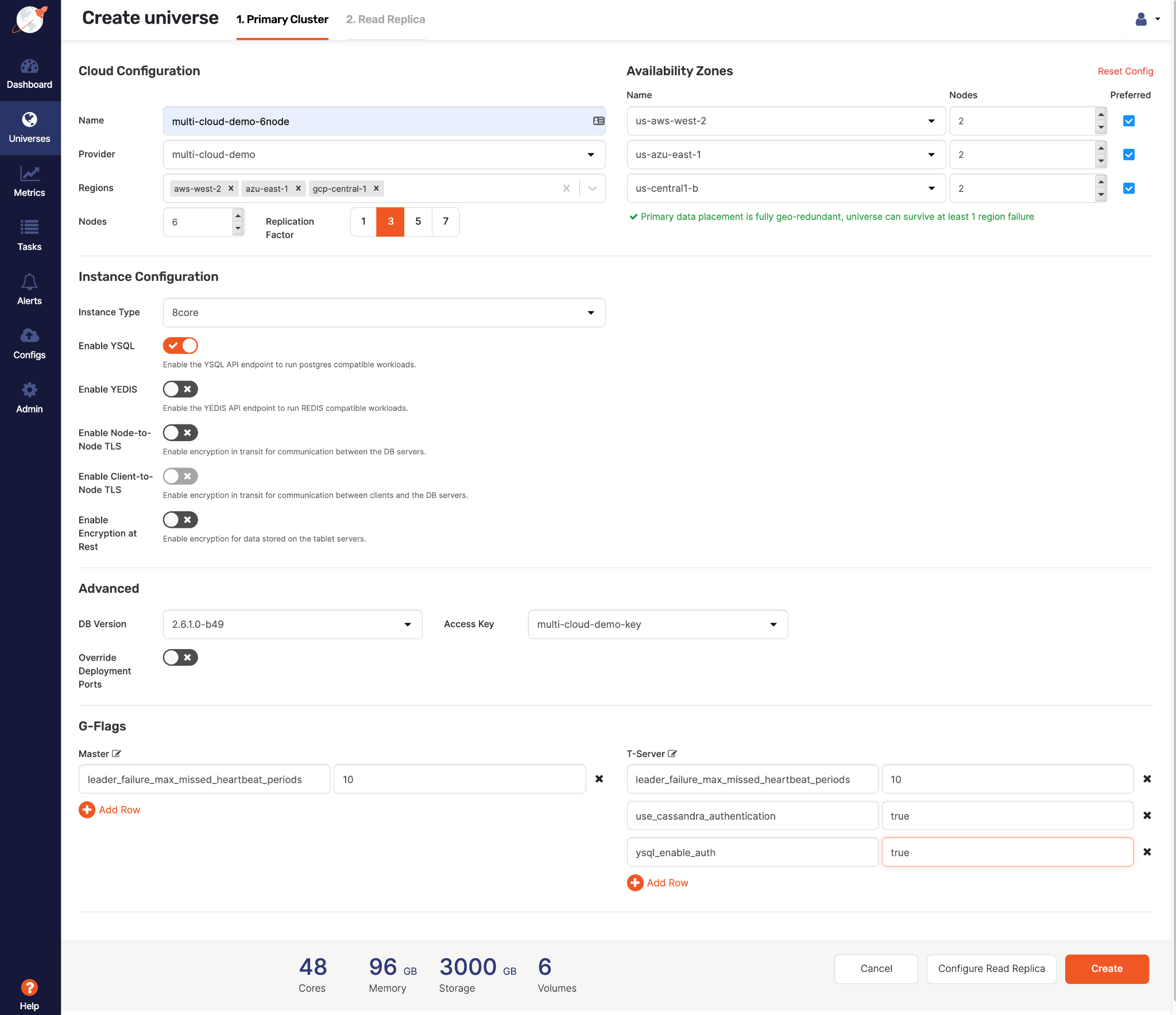
-
Enter the universe name:
multi-cloud-demo-6node -
Enter the set of regions:
us-aws-west-2,us-azu-east-1,us-centra1-b -
Set instance type to
8core. -
Add the following flags for Master and T-Server:
-
leader_failure_max_missed_heartbeat_periods=10
Because the data is globally replicated, RPC latencies are higher. This flag increases the failure-detection interval to compensate.
And because deployments on public clouds require security: -
use_cassandra_authentication=true -
ysql_enable_auth=true
-
-
Click Create at the bottom right.
At this point, Yugabyte Platform begins to provision your new universe across multiple cloud providers. When the universe is provisioned, it appears on the Dashboard and Universes pages. Click the universe name to open its overview page.
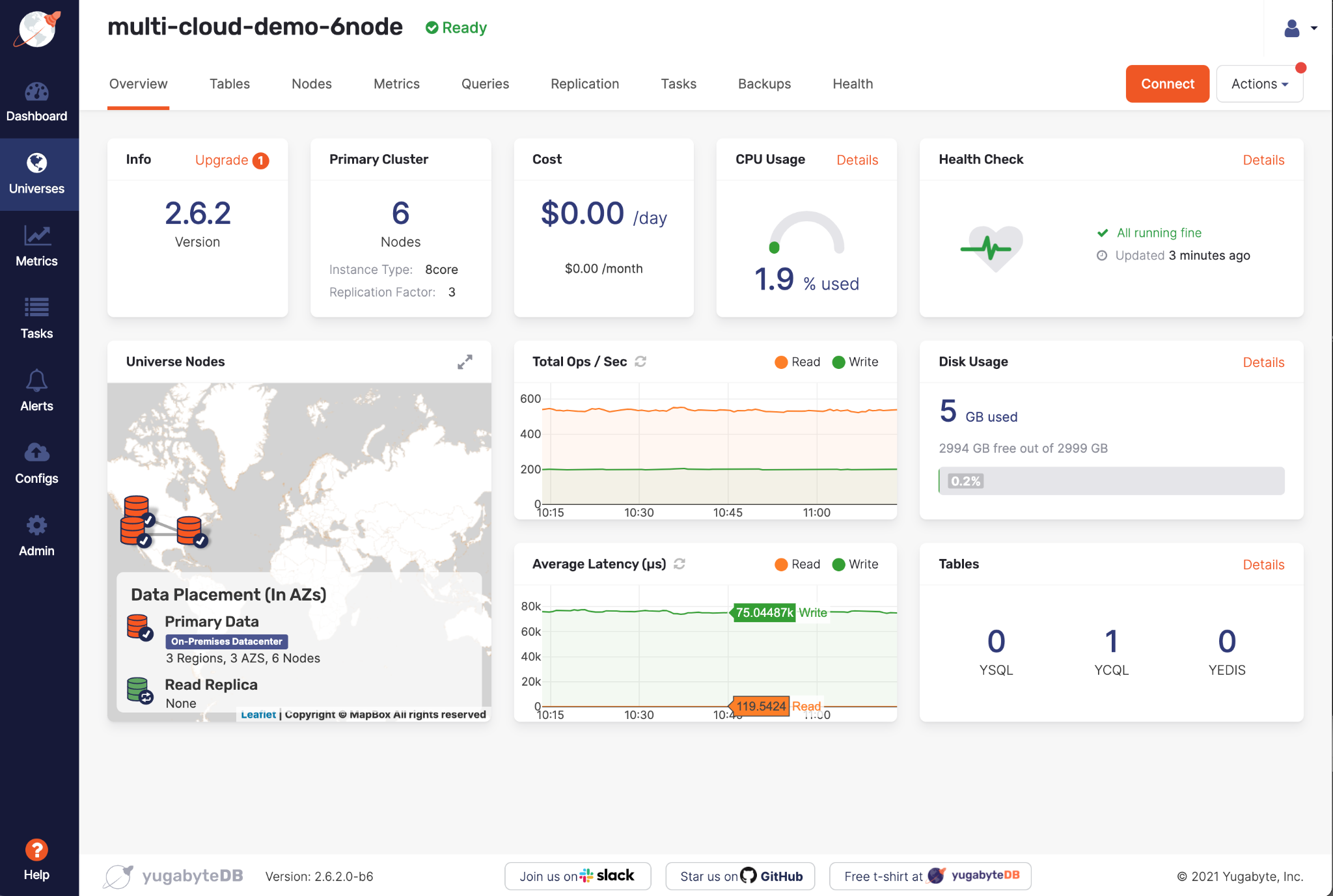
The universe's nodes list will be similar to the following:
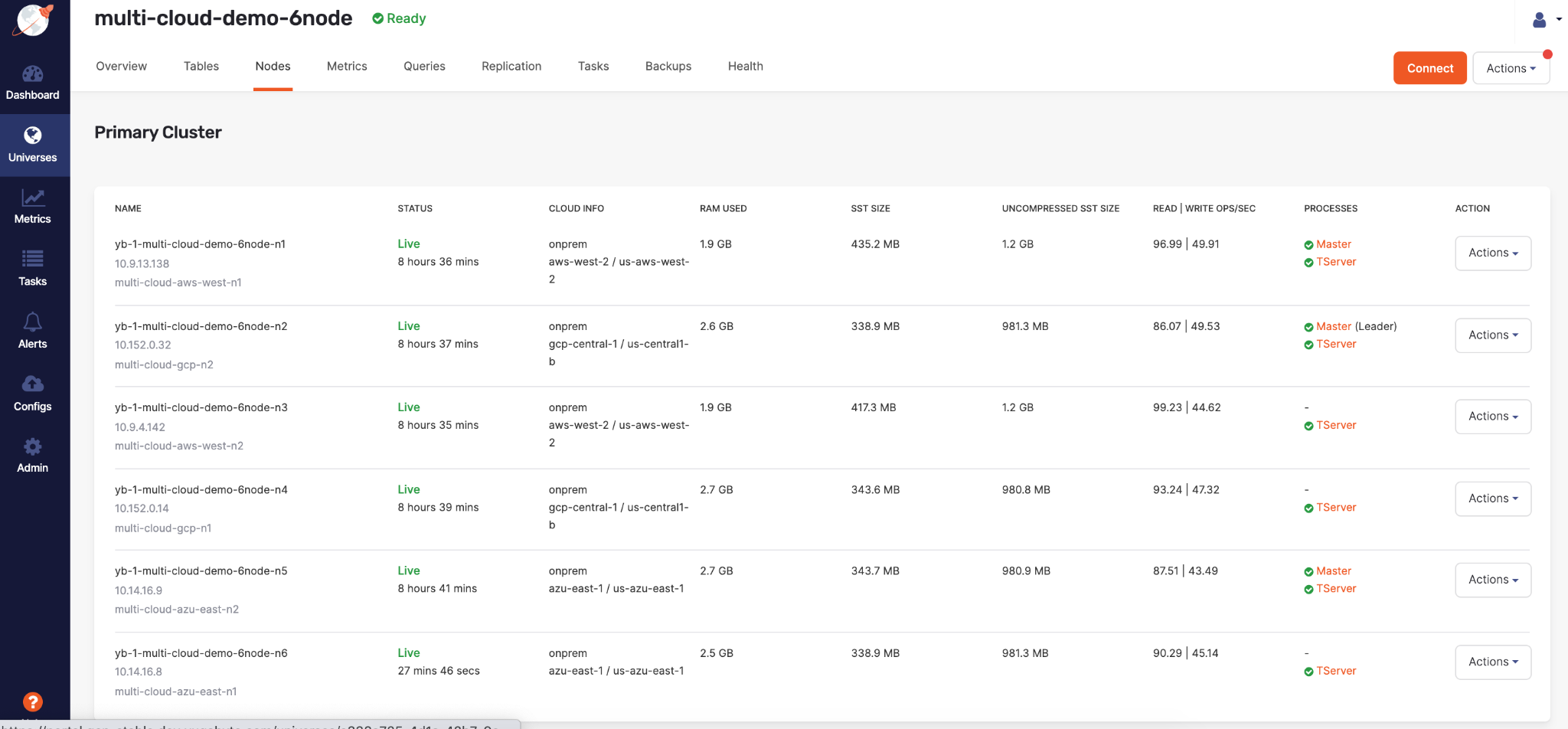
Run the TPC-C benchmark
To run the TPC-C benchmark on your universe, you can use commands similar to the following (with your own IP addresses):
./tpccbenchmark -c config/workload_all.xml \
--create=true \
--nodes=10.9.4.142,10.14.16.8,10.9.13.138,10.14.16.9,10.152.0.14,10.152.0.32 \
--warehouses 50 \
--loaderthreads 10
./tpccbenchmark -c config/workload_all.xml \
--load=true \
--nodes=10.9.4.142,10.14.16.8,10.9.13.138,10.14.16.9,10.152.0.14,10.152.0.32 \
--warehouses 50 \
--loaderthreads 10
./tpccbenchmark -c config/workload_all.xml \
--load=true \
--nodes=10.9.4.142,10.14.16.8,10.9.13.138,10.14.16.9,10.152.0.14,10.152.0.32 \
--warehouses 50
Refer to Running TPC-C on Yugabyte for more details.